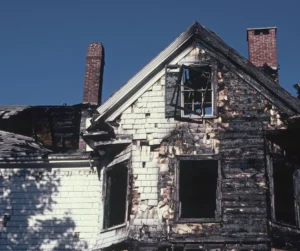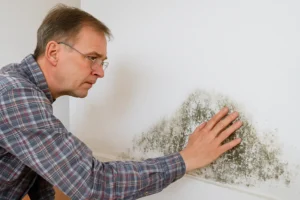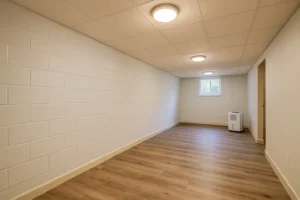What Homeowners Need to Know About Fire Damage Restoration and Soot Cleaning
In the wake of the Eaton Fire, which severely impacted homes in Altadena, and the persistent fire risks in areas like Pacific Palisades, homeowners are left grappling with the devastating effects of soot, char, ash, and smoke damage. While insurance companies are supposed to cover the costs of fire cleanup, many homeowners are finding that they are not receiving the full compensation they deserve.
Understanding fire damage restoration and knowing how to navigate insurance claims can mean the difference between a properly restored home and ongoing health hazards from lingering contaminants. In this article, we’ll break down the essential steps of soot cleaning, attic cleaning, and smoke removal, while also discussing how homeowners can ensure they receive fair treatment from their insurance provider.
What is Fire Damage Restoration and Why is it Important?
In the wake of the Eaton Fire, which severely impacted homes in Altadena, and the persistent fire risks in areas like Pacific Palisades, homeowners are left grappling with the devastating effects of soot, char, ash, and smoke damage. While insurance companies are supposed to cover the costs of fire cleanup, many homeowners are finding that they are not receiving the full compensation they deserve.
Understanding fire damage restoration and knowing how to navigate insurance claims can mean the difference between a properly restored home and ongoing health hazards from lingering contaminants. In this article, we’ll break down the essential steps of soot cleaning, attic cleaning, and smoke removal, while also discussing how homeowners can ensure they receive fair treatment from their insurance provider.
Why Insurance Often Falls Short in Covering Fire Damage Restoration
When a homeowner files a claim for fire damage restoration, their insurance provider sends an adjuster—or in some cases, a third-party adjuster contracted by the insurance company—to assess the damage. Unfortunately, in many cases, these adjusters fail to account for the full extent of the damage.
We have seen insurance companies attempt to only pay for minor cleaning, such as carpet cleaning, in homes where entire neighborhoods burned down. This is completely unacceptable and leaves homeowners at a disadvantage. The reality is that soot, char, and ash can deeply penetrate porous materials, making simple cleaning insufficient.
What Insurance Should Cover but Often Doesn't
Full home cleaning
Soot, ash, and smoke settle in every nook and cranny, including walls, ceilings, HVAC systems, and attics.
Furniture replacement
Porous furniture such as couches, mattresses, and upholstered chairs absorb smoke and toxins. Most of these items should be replaced, not just cleaned.
Attic cleaning and insulation removal
Homes with attic vents allow smoke and ash to settle into insulation, which needs to be removed and replaced to prevent long-term air quality issues.
HVAC cleaning
Smoke and soot enter air ducts, making thorough duct cleaning a necessity.
Hygiene testing and contamination assessment
Fire damage restoration is not complete without testing for contaminants and developing proper cleaning protocols.
The Problem with Preferred Vendors Like Servpro and ServiceMaster
Many insurance companies have “preferred vendors” such as Servpro, ServiceMaster, and other national restoration companies. While these companies may provide basic cleaning services, they often work within strict guidelines set by the insurance companies—guidelines that limit the scope of work and keep costs low for insurers, not homeowners.
As a result, these preferred vendors may cut corners or provide only partial cleaning when full restoration is necessary. Homeowners are often better off hiring an independent fire damage restoration expert who will work in their best interest rather than the insurance company’s.
Why Attic Cleaning is Critical After Fire Damage
Steps for Proper Attic Cleaning After a Fire

Insulation Removal
Contaminated insulation must be completely removed and replaced.

Structural Cleaning
Wood beams, rafters, and other attic structures should be treated and sealed to remove soot.

Duct System Cleaning
Air ducts should be thoroughly cleaned to prevent ongoing air contamination.

Hygiene Testing
Proper testing ensures that all contaminants have been effectively removed.
Why Homeowners Should Demand Fair Insurance Settlements
Hire an independent fire damage restoration expert
Don’t rely solely on the insurance adjuster’s assessment.
Request hygiene testing
A professional hygiene test will assess contamination levels and outline a proper cleaning protocol.
Negotiate with your insurance provider
Know your rights under California law and demand fair compensation for necessary restoration work.
Should You Attempt DIY Fire Damage Cleanup?
Asbestos
Common in older homes, especially in insulation, ceiling tiles, and floor tiles.
Lead
Found in older paint and pipes.
Volatile organic compounds (VOCs)
Released from burned materials, including plastics and synthetic furniture.
The Role of Hygiene Testing in Fire Cleanup
Hygiene testing is an essential step in ensuring a fire-damaged home is safe to inhabit. A qualified fire restoration professional should:
- Test for contaminants such as soot, ash, and chemical residues.
- Determine the necessary cleaning and decontamination procedures.
- Establish a step-by-step restoration plan.
Without proper hygiene testing, homeowners may unknowingly live in a toxic environment, exposing their families to long-term health risks.
Final Thoughts: Take Control of Your Fire Damage Restoration
If your home in Altadena or Pacific Palisades has been affected by soot, smoke, or fire damage, don’t settle for less than what you’re entitled to. Insurance companies have a legal obligation to cover proper restoration, but they often attempt to minimize payouts.
- Work with an independent fire damage restoration expert.
- Avoid preferred vendors who work for the insurance company.
- Demand attic cleaning and insulation replacement if your attic was exposed to smoke.
- Request hygiene testing and a thorough cleaning plan.
Fire damage restoration is not just about cleaning up—it’s about making your home safe again. Contact a trusted fire restoration professional today to ensure your home receives the care it truly needs.





